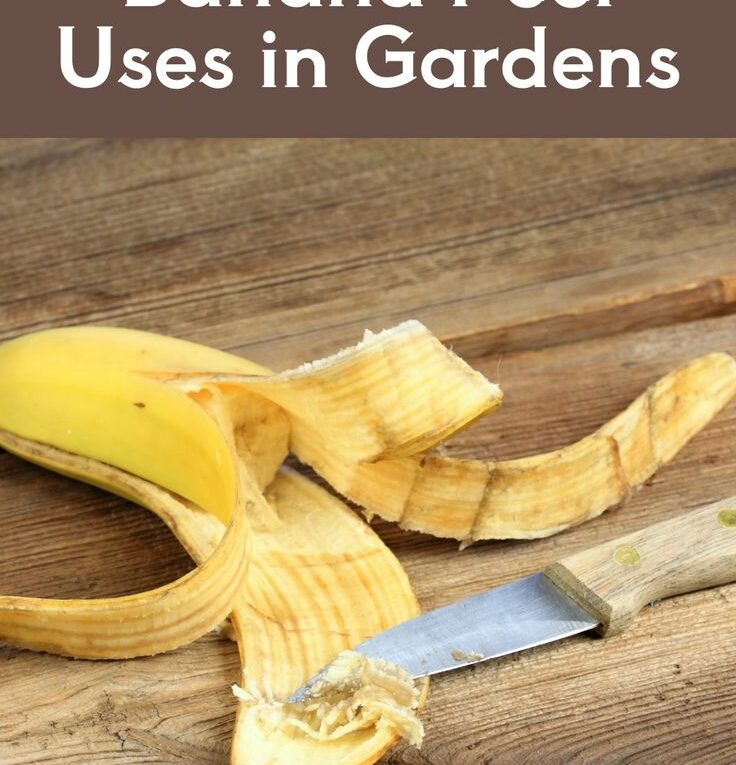12 Ways to Use Banana Peels in Your Garden
When you think of banana peels, your mind may automatically associate them with slip hazards or comedic pratfalls. However, did you know that banana peels are not only great for your health but also have numerous benefits for your garden? That’s right! Instead of tossing those banana peels into the trash, consider repurposing them in your garden to enhance the overall health and productivity of your plants. In this article, we will explore 12 innovative ways to use banana peels in your garden and promote sustainable gardening practices.
-
Nutrient-Rich Compost Boosters:
Banana peels are packed with essential nutrients such as potassium, phosphorus, and calcium. Adding them to your compost pile helps enrich the organic matter, leading to a nutrient-rich compost that can be used to fertilize your garden. Chop the peels into small pieces to speed up the decomposition process, ensuring a steady supply of organic goodness for your plants.
-
Natural Fertilizer:
In addition to composting, you can use banana peels directly as a natural fertilizer. Simply bury them 1-2 inches deep in the soil around your plants. As the peels break down, they release nutrients that promote healthy growth, flowering, and fruiting. This organic alternative not only saves money but also reduces reliance on synthetic fertilizers.
-
Pest Deterrent:
Banana peels can play a vital role in keeping pests away from your precious plants. The strong odor emitted by decomposing banana peels acts as a natural repellent for aphids, ants, and other common garden pests. Surround vulnerable plants with banana peels or scatter small pieces near problem areas to deter pests effectively.
-
Seedling Starter Pots:
Give your seedlings a healthy head start by creating biodegradable starter pots using banana peels. Cut the peels into sections, fill them with seed-starting soil, and plant your seeds. The peels will naturally decompose, providing additional nutrients and eliminating the need for plastic pots. When it’s time to transplant, plant the entire pot directly into the ground.
-
Compost Tea:
Banana peels can be used to create nutrient-rich compost tea, a liquid fertilizer that promotes plant growth. Soak a few banana peels in a bucket of water for a few days, and then use the resulting liquid as a foliar spray or soil drench. This will supply your plants with a concentrated dose of potassium, which aids in overall plant health and fruit production.
-
Aphid Control:
If your plants are suffering from an aphid infestation, banana peels can come to the rescue. Bury small pieces of the peel around affected plants, ensuring that the inside of the peel is in contact with the soil. The aphids will be attracted to the peel, providing a natural trap and protecting your plants from further damage.
-
Mulch:
Banana peels can be dried and ground into a fine powder to create nutrient-rich mulch. Spread this mulch around the base of your plants to suppress weed growth, retain moisture, and gradually release nutrients into the soil. It’s a sustainable way to nourish your garden while maintaining a tidy and attractive appearance.
-
Rose Plant Boosters:
Roses, known for their beauty and fragrance, can benefit greatly from the application of banana peels. Blend a few peels with water to create a banana peel puree. Dilute the puree with additional water and use it to water your rose bushes. The potassium and phosphorus present in the peels will enhance blooming and help maintain healthy, vibrant roses.
-
Soil Amendment:
Banana peels can improve the structure and fertility of your garden soil. Before planting, bury banana peels directly into the soil. As they decompose, they release valuable nutrients and organic matter, enriching the soil and promoting better water retention. This amendment enhances the overall health and productivity of your plants.
-
Compost Accelerator:
If you’re looking to speed up the composting process, banana peels can be a valuable addition. Their high potassium content helps activate the decomposition of other organic materials in your compost pile. Chop the peels into small pieces and mix them in with your compost to provide a boost of nutrients and accelerate the breakdown of organic matter.
-
Plant Disease Prevention:
Banana peels contain antifungal properties that can help prevent certain plant diseases. When planting susceptible plants, such as tomatoes or cucumbers, bury small pieces of banana peel around the base of the plant. The peels act as a natural barrier, reducing the risk of fungal infections and promoting healthier plant growth.
-
Attracting Butterflies:
If you want to attract beautiful butterflies to your garden, banana peels can be a helpful tool. Place a few pieces of ripe banana peel on a shallow dish or plate and position it in your garden. The sweet aroma will attract butterflies, providing a delightful and colorful addition to your outdoor space.
Conclusion:
Banana peels are a versatile and eco-friendly resource that can be utilized in numerous ways to benefit your garden. From providing essential nutrients and acting as natural fertilizers to deterring pests and improving soil health, banana peels offer a sustainable solution for gardeners. By incorporating these 12 creative uses into your gardening routine, you can maximize the growth, productivity, and overall well-being of your plants while reducing waste. So, the next time you enjoy a delicious banana, remember that its peel has great potential to nurture and enhance your garden.
